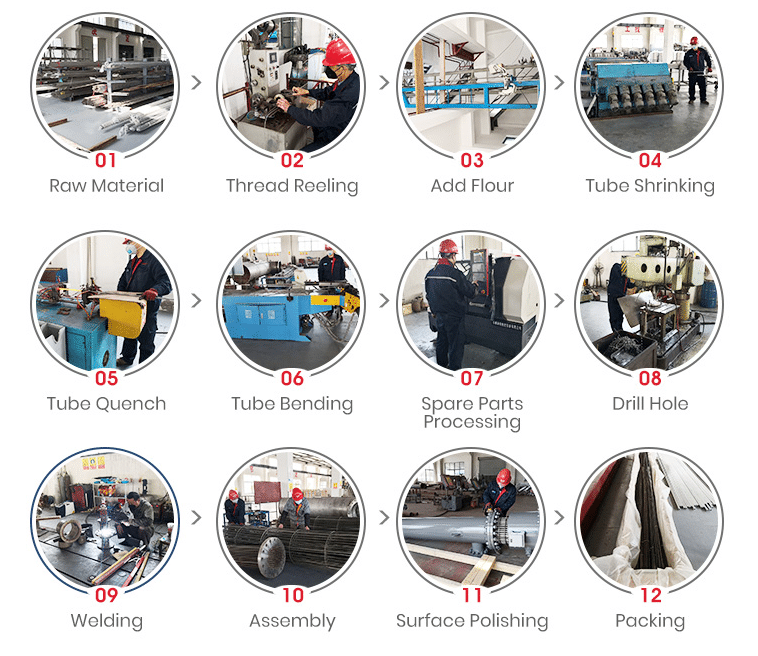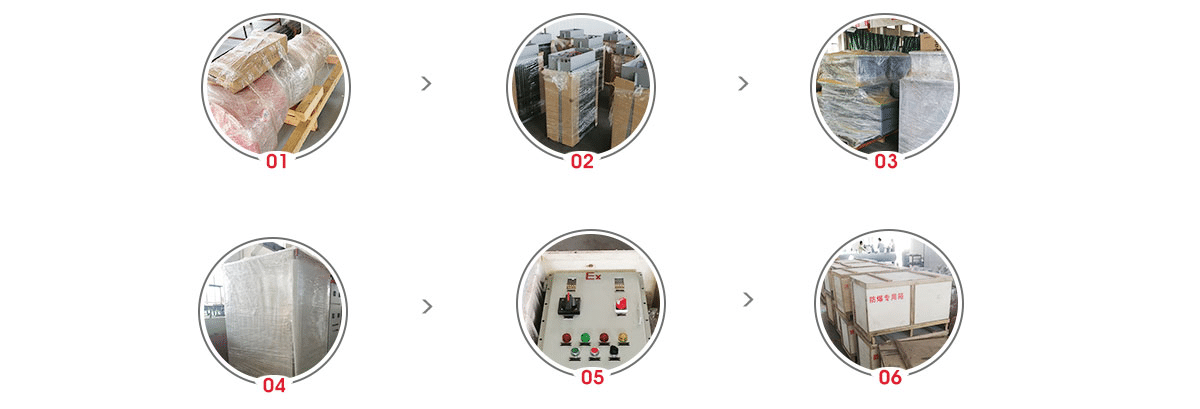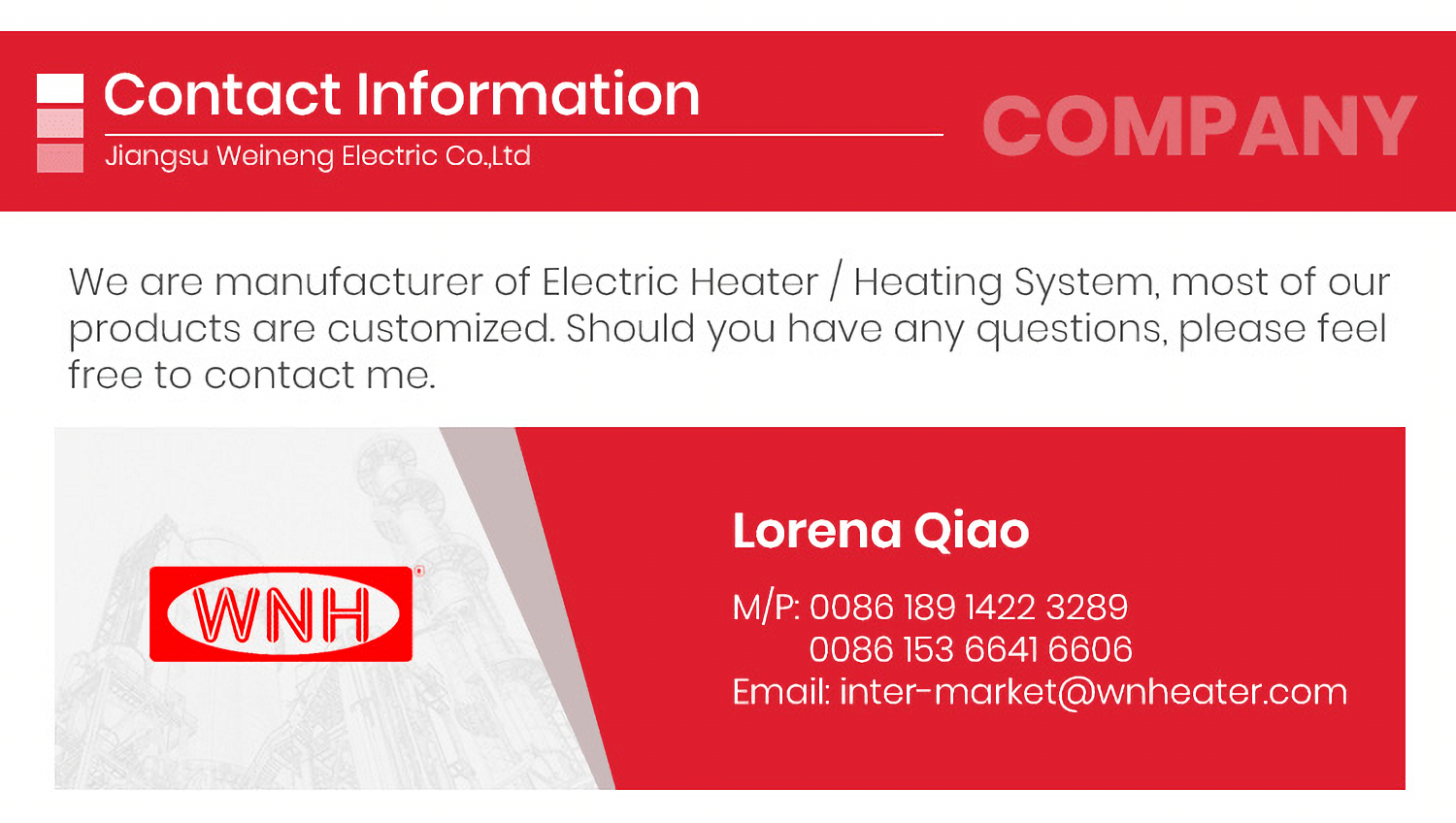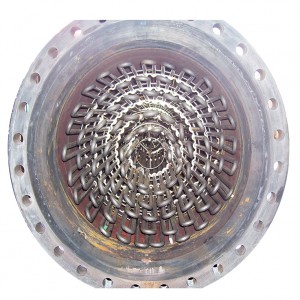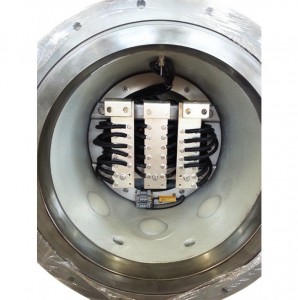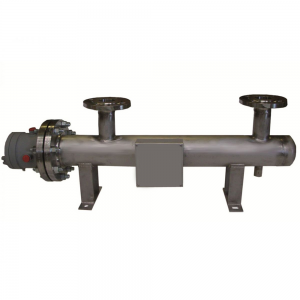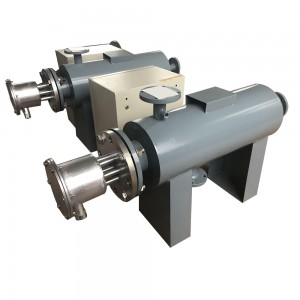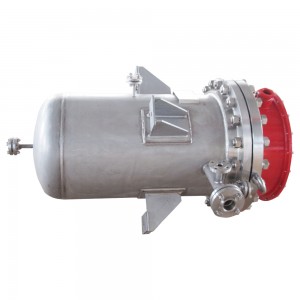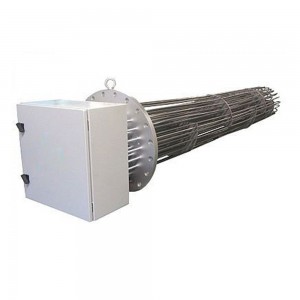Flange type immersion heater
Explosion proof construction: II2G Ex db IIC T1…T6 Gb
Range of ambient temperature:-60C /+60C
IP65 junction box protection
Standard elements available sheathed within: AISI 321, AISI 316, Incoloy800 and Inconel625
Multiple rows of elements for higher wattages
Flange mounted with removable stand pipe for an easy installation.
Storage tanks
Heating liquids in large tanks or vessels with low levels of product.
Heating liquids in underground tanks.
1.Are you factory?
Yes, we are factory, all customers are more than welcome to visit our factory .
2.What are the available product certifications?
We have certifications such as: ATEX, CE, CNEX. IS014001, OHSAS18001,SIRA, DCI. Etc
3.What type of temperature sensors are provided with the heater?
Each heater is provided with temperature sensors at the following locations:
1) on the heater element sheath to measure maximum sheath operating temperatures,
2) on the heater fange face to measure maximum exposed surface temperatures, and
3) An Exit temperature measurement is placed on the outlet pipe to measure the temperature of the medium at the outlet. The temperature sensor is a thermocouple or PT100 thermal resistance, according to customer requirements.
4.Can WNH provide anti-condensation heaters to prevent damage from moisture?
Yes, an anti-condensation heater can be provided within the heater terminal enclosure, based on customer specifcations.
5.How to Choose an Industrial Heater?
It is important to consider the specifics of your application prior to selecting the heater to use. Of primary concern is the type of medium being heated and the amount of heating power required. Some industrial heaters have been specially designed to function in oils, viscous, or corrosive solutions.
However, not all heaters can be used with any material. It is important to confirm the desired heater will not be damaged by the process. In addition, it is necessary to select an electric heater that is appropriately sized. Be sure to determine and verify the voltage and wattage for the heater.
One important metric to consider is Watt Density. Watt density refers to the heat flow rate per square inch of surface heating. This metric shows how densely the heat is being transferred.
